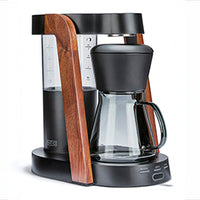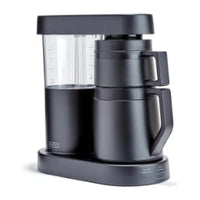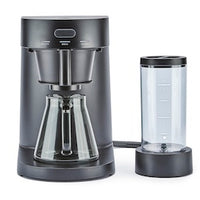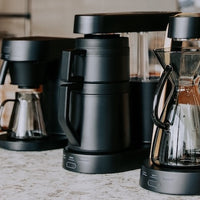Stirring, Not Swirling? You’re Missing Out on Aromatics
Key Takeaways
-
Swirling coffee helps release trapped aromatics that define flavor perception
-
Stirring can over-agitate and muddy the brew’s texture
-
Aromatics are a huge part of how we experience flavor — not just smell
-
Proper swirling enhances clarity, balance, and nuance in your cup
-
A mindful swirl can elevate even a simple coffee into a fuller sensory experience
The moment your coffee hits the cup, it’s telling a story — but if you’re just giving it a quick stir and moving on, you’re probably missing the best part.
While stirring might feel like the “complete” way to mix or evaluate your brew, it’s actually swirling that coaxes out the full spectrum of aromatics. And if you’re skipping that step, your cup is a little flatter than it has to be.
Let’s break down why that subtle swirl matters so much and how it can completely change how you experience your next cup.
Why Aromatics Matter More Than You Think
Flavor and aroma are intertwined. What we think of as taste is actually a combination of:
-
Sweet, salty, bitter, sour, umami (on the tongue)
-
Aroma compounds that travel through the nose
Aromatics are volatile — they escape quickly. That means if you’re not actively releasing and capturing them, they’re gone before you get to enjoy them.
Coffee is loaded with these aromatic compounds, ranging from floral and fruity to nutty, spicy, and earthy. But unless they’re released properly, they remain hidden.
Stirring vs Swirling: The Key Differences
Stirring:
-
Can overmix or introduce sediment (especially in French press or pour-over)
-
Muddles aromatics by re-integrating them too aggressively
-
Can cool the coffee faster
Swirling:
-
Gently aerates the surface
-
Encourages volatile aromatics to rise
-
Preserves clarity and mouthfeel
-
Helps you smell (and therefore taste) more complex notes
Swirling mimics what professional cuppers do when evaluating coffee — it’s a way to awaken and appreciate the cup’s hidden layers.
When to Swirl Your Coffee
Swirling isn’t just for show — it has practical benefits when done at the right time:
After Pouring:
Give your coffee a gentle swirl after it’s poured into the mug. This releases built-up gases and unlocks aromatics that may have been trapped beneath the surface.
During Cooling:
As coffee cools, aromatics become more pronounced. Swirling periodically helps you catch those evolving notes as the temperature drops.
Before Sipping:
A quick swirl just before sipping lifts aromatics toward your nose, enhancing the first taste.
Try it and see — you’ll notice more nuance, especially in single-origin coffees or lighter roasts.

The Swirl Technique (Yes, There’s a Right Way)
You don’t need to be theatrical — just intentional. Here’s how:
-
Hold your cup by the rim or handle
-
Gently rotate your wrist in small circles
-
Let the coffee roll up and around the sides — but not so much it sloshes
-
Inhale as you swirl — the aroma will be more noticeable
Pro tip:
Use a tulip-shaped or narrow-top mug. These help concentrate the aromas at the top, similar to a wine glass.
When Stirring Still Has a Place
Swirling doesn’t eliminate the need for stirring altogether. Stirring is useful:
-
During brewing (e.g., bloom phase in pour-over)
-
When adding sugar or milk
-
To ensure even saturation in immersion methods
Just don’t confuse it as the final step. Once your brew is in the cup, switch to swirling to experience the coffee’s aroma spectrum.
Why This Matters for Every Coffee Drinker
Even if you’re not a coffee geek, small techniques like swirling can unlock more enjoyment from the coffee you already love. You’ll:
-
Smell more
-
Taste more
-
Notice temperature shifts better
-
Appreciate roast profiles more clearly
If you’re investing in good beans, why not extract everything they have to offer?
Good Coffee, Great Experience
Coffee machines like those from Ratio Coffee deliver precision, consistency, and balance with every brew — but how you enjoy that brew matters just as much. Swirling is one of those quiet details that elevates the entire experience.
Flavor isn’t just about what hits your tongue — it’s about what fills your senses. A swirl helps your coffee do exactly that.
Frequently Asked Questions
Does swirling actually change the flavor?
Technically, it changes how you perceive the flavor by enhancing aroma. Since smell is a major part of taste, the effect is real and noticeable.
Can you swirl in any kind of cup?
Yes, but cups with a narrower opening help trap and direct aromatics upward, making the swirl more effective.
Is there such a thing as over-swirling?
Yes — overly vigorous swirling can cool the coffee too fast or spill it. Gentle, short rotations are best.
Should I swirl espresso?
Not really. Espresso is already highly concentrated and volatile. Stirring is more common with espresso to integrate layers (like crema).
 Ratio Eight S2
Ratio Eight S2
 Ratio Eight Original
Ratio Eight Original
 Ratio Six
Ratio Six
 Ratio Four
Ratio Four
 Compare Machines
Compare Machines






